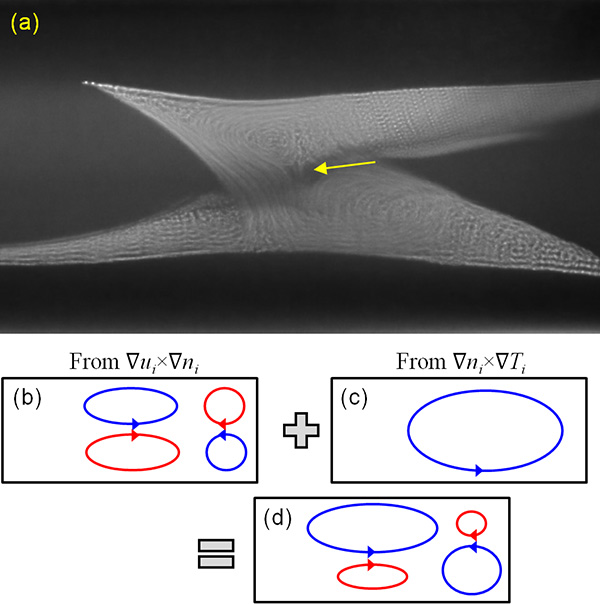Dusty Plasmas

Dusty plasma research is a relatively new field and most laboratory research until now has used micron-sized plastic spheres as the dust grains. Our group has developed a dusty plasma experiment where the dust grains are water ice. This involves using liquid nitrogen to cool the electrodes of a weakly-ionized radio frequency produced plasma and then introducing a small, controlled amount of water vapor into the vacuum chamber confining the plasma. Under suitable conditions the water vapor spontaneously nucleates and forms tiny ice particles which quickly grow to rather large size. The water ice grains are electrically charged. They interact with each other, with the plasma ions and electrons, and with neutral particles. Complex phenomena are observed including a self-organization of the water ice grains into a lattice-like structure, motion of the grains in a wave, and flows of the grains in a vortex. The ice grains are typically not spherical in contrast to early predictions but instead have a needle-like shape. One feature of the mutual interaction of the ice grains is that the needles spontaneously become parallel and equidistant from each other.
We use advanced imaging systems to photograph the growth, motion, and alignment of these grains and have succeeded in making movies showing vortex motion and wave motion. The oscillation of the needle-shaped ice grains in a wave is reminiscent of the motion of mosquito larvae moving up and down in a water wave.
Starting in late 2017 we are developing an advanced diagnostic based on laser-induced-fluorescence which will measure the flow motion of the neutral particles and the plasma ions in the ice dusty plasma. This diagnostic will later measure similar flow motion in a plastic sphere dusty plasma experiment that is a replica of an experiment on the International Space Station.